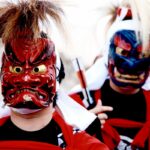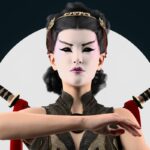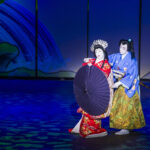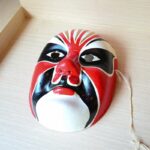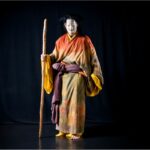While females were banned from performing in kabuki theater, over time the rules were relaxed. During the time when females were banned, onnagata flourished as females were played by males.

It takes a lot of training and skill for a male actor to perform the role of a female character effectively. That’s part of the reason why the practice of onnagata remains so popular to this day. To find out what onnagata means and why it remains so important, read on.
The Translation Of Onnagata
Onnagata translates to ‘female role specialist’ and directly refers to those female roles played by male actors in kabuki theater. Though the term is defined by a female character, onnagata does have a masculine aspect.
This has more to do with the artful sensibility which is crucial to kabuki theater. While a young girl may appear on stage in a kimono, it can be seen as art when you soon realize it is, in fact, a middle-aged man in delicate make-up and costume.
The History Of Onnagata
The practice of onnagata dates back to 1629 which gives you an idea of how far back kabuki theater dates. Onnagata came into effect when a law was first enforced to prevent women from appearing on a theater stage in Japan.
This may seem like an antiquated practice yet the context is relevant when you consider why the ban was introduced.
These female performers were banned by the shogun Tokugawa Iemitsu as the dances they performed were said to cause damage to the morality of society. Kabuki performances were often sponsored by brothels and other related places.
Furthermore, prostitution was a common practice among female performers. The ban was subsequently enforced to protect public morals and all-male casts simply became the norm in kabuki theater.
The fact that female performers were banned in kabuki theater should not come as a huge surprise. Indeed, women have been banned from the public stage in several other countries. That includes England, even during Shakespeare’s time.
For a brief time, female performers were briefly allowed to perform in kabuki theater and were known to be highly skilled. This was during the mid-17th century which became known as the ‘Onna Kabuki’ period when female actors played males and females.
During the brief period when female performers were allowed in kabuki theater, it did help to mold the art form. The ‘Onna Kabuki’ period was relatively short-lived and the ban was reinforced a few years later.
This was likely due to how telling for the performance it could be to have a female played by a male.
Indeed, despite kabuki theater deciding to prohibit females from performing, the ‘Onna Kabuki’ period has come to be known as an important part of the development of kabuki theater.
The initial ban may seem unacceptable in today’s society yet kabuki theater still chooses to ignore the new freedom. Though female performers are allowed in kabuki theater when the ban was relaxed in 1888, casts are still male-dominated.
While seeing a female performer in kabuki theater may have been a rare occurrence, they did still exist after the ban was relaxed. However, those problems that resulted in female performers being banned initially did persist.
Patrons then went on to pursue young male actors, known as wakash, just as they tried with female performers centuries before.
The Importance Of The Male Body In Onnagata
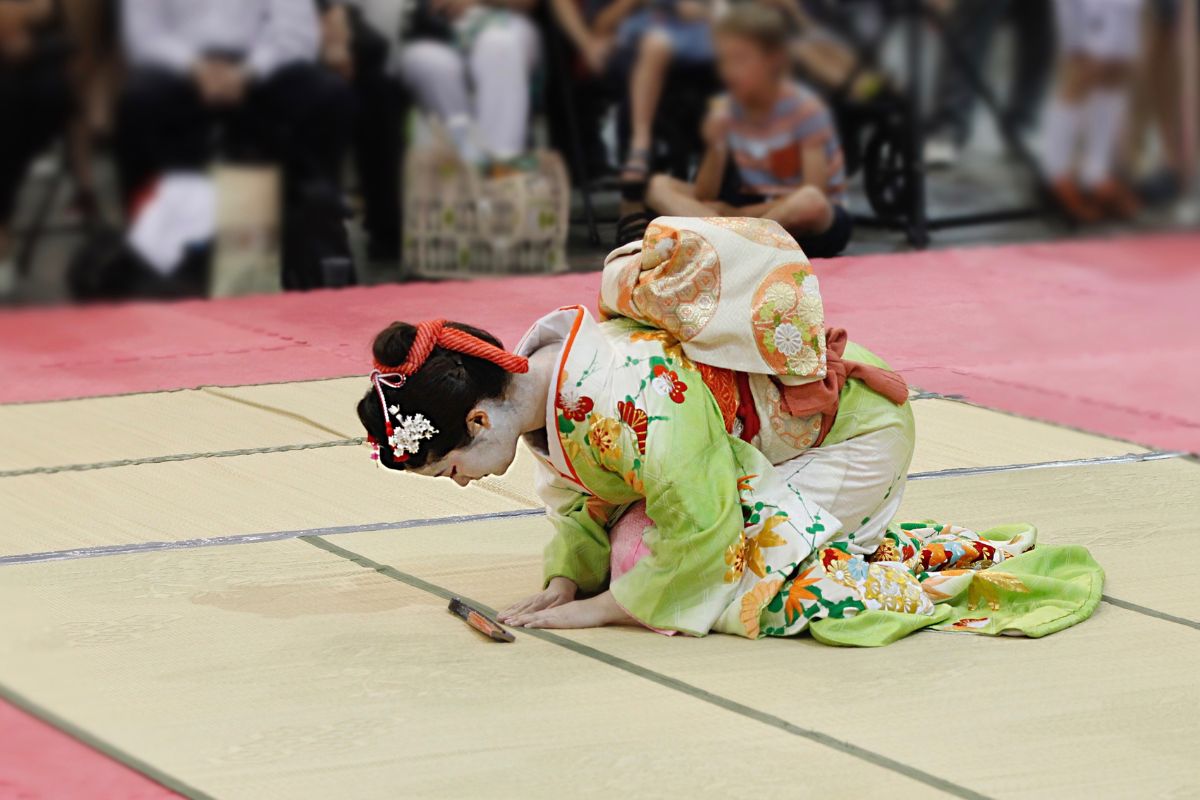
To the audience at kabuki theater, the male body is crucial to an onnagata performance. The fact that a male actor is portraying a female character offers an intriguingly ambiguous interplay.
It should be fairly obvious that a male actor is behind the portrayal so their performance has a certain, somewhat unavoidable, masculine aspect.
When you do consider that a male actor is playing a female character it does give a sense that characters can remain beautiful, even if they appear a little unnatural.
The Enduring Popularity Of Onnagata
Female characters play a crucial role in kabuki theater, especially when you consider the love stories that persist. These conflicts of the heart largely necessitate a female character so onnagata has grown in popularity.
The male actors that play the onnagata roles also became popular due to the femininity and vitality they bring to the part. The way that they move gracefully and delicately across a stage can also prove to be captivating to an audience.
In more recent years, onnagata kabuki theater has become an open place for discussion on expression and gender identity. This is an important facet of the art form in modern Japan and goes some way to explain its enduring popularity.
Being a traditional and all-male art form makes for a vibrant and emotional form of storytelling. Even if female characters are traditionally not portrayed by female performers, those characters still play a significant role.
By having these female characters played by males, those actors can explore femininity and what it means to be a woman. With female performers being largely forbidden from kabuki theater, onnagata indicates a high level of skill and artistry.
Final Thoughts
Perhaps one of the primary reasons why onnagata has become so popular is simply how masterful it is. The practice of a male actor performing the role of a female character should not be underestimated.
Over time, as more male actors performed onnagata, the better and more nuanced their performances became. Onnagata is a dedicated skill that has become an important part of kabuki theater.
Having a male performer perform a female character represents a fundamental aspect of how females are portrayed. There is a sense that it takes a more accomplished performance from a male actor to successfully portray a female character.
Onnagata forms the female aspect of kabuki theater but also becomes a bridge between that aspect and the male one. By portraying female characters so well, onnagata provides a vital part to explain the popularity of kabuki theater.
Frequently Asked Questions
If Onnagata Is Translated To Mean ‘Female Role Specialist’ Then What Is A ‘Male Role Specialist’ In Kabuki Theater?
Just as there is a term for a ‘female role specialist’ in kabuki theater, there is also one for a ‘male role specialist’. That term is tachiyaku and is for a main male gender role in a kabuki theater performance.
Are There Any Specifications For A Male Actor To Perform Onnagata?
Even though kabuki theater is male-dominated, not all males can play onnagata roles effectively. A lot of onnagata performers have androgynous features, even though they should not have to rely on their physical appearance.
Their performance has to be nuanced too so many male actors go through a long training period. There are also several mannerisms that have to be learned as they typify an onnagata performance.
This includes speaking in falsetto while standing with a slightly arched back and knees. That stance gives the appearance of looking slightly smaller while any movement is tightly controlled for elegance.
In fact, one of the issues that kabuki theater has is that many male patrons fall in love and then quarrel over the performer’s favor.
- 16 Best Websites To Watch Japanese Movies With English Subtitles - May 11, 2023
- Is ZIPAIR The Best Airline For Traveling To Japan? - May 11, 2023
- Ryu Murakami Vs Haruki Murakami – Which One Should You Read? - May 11, 2023

